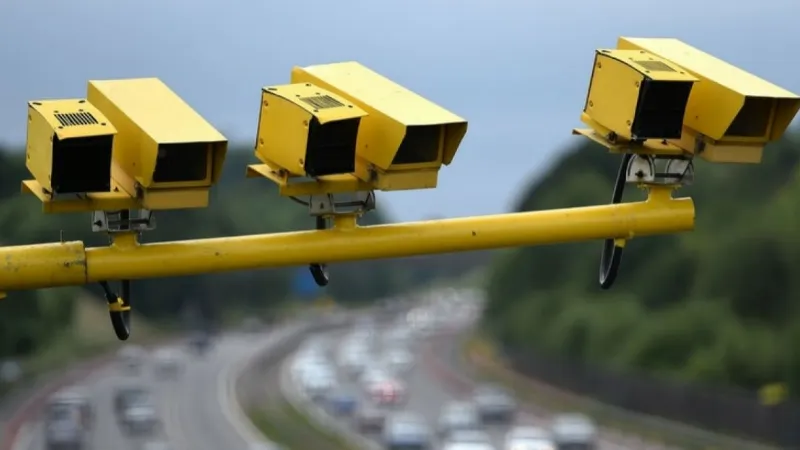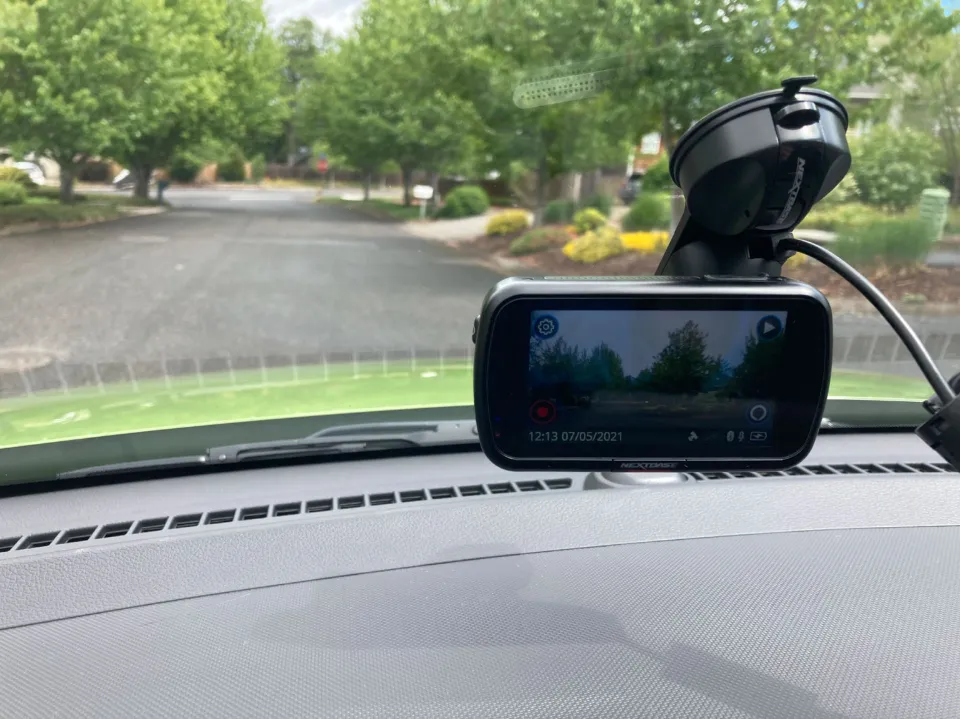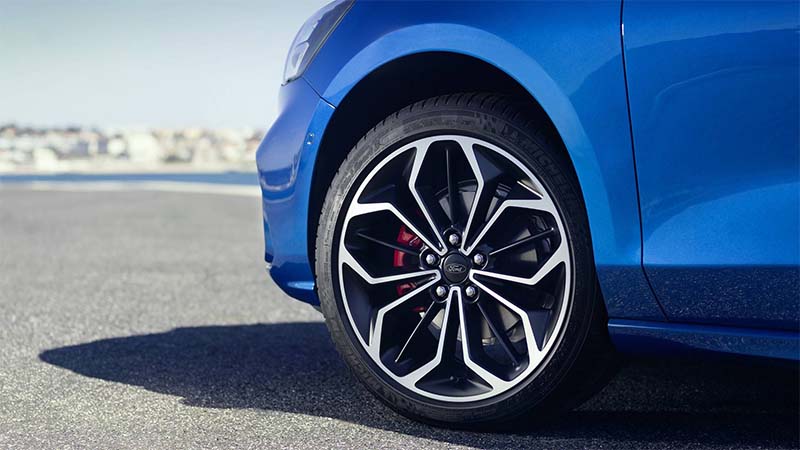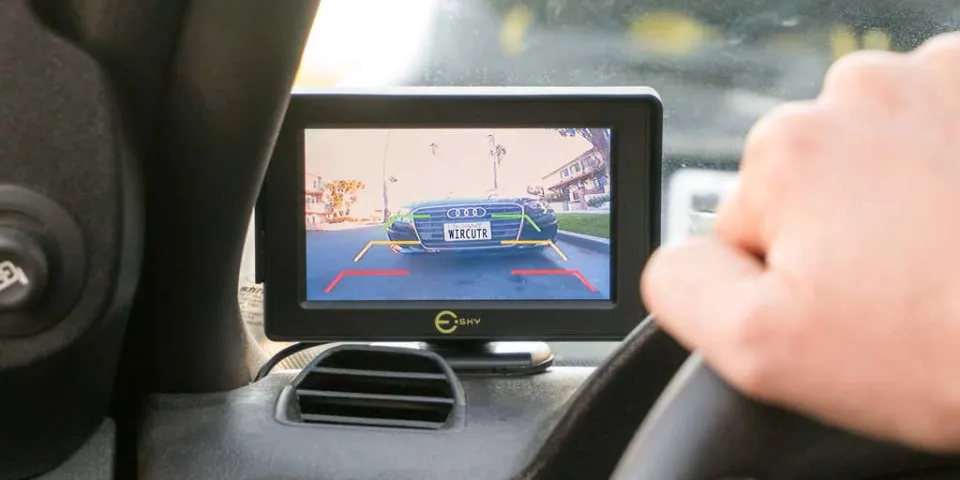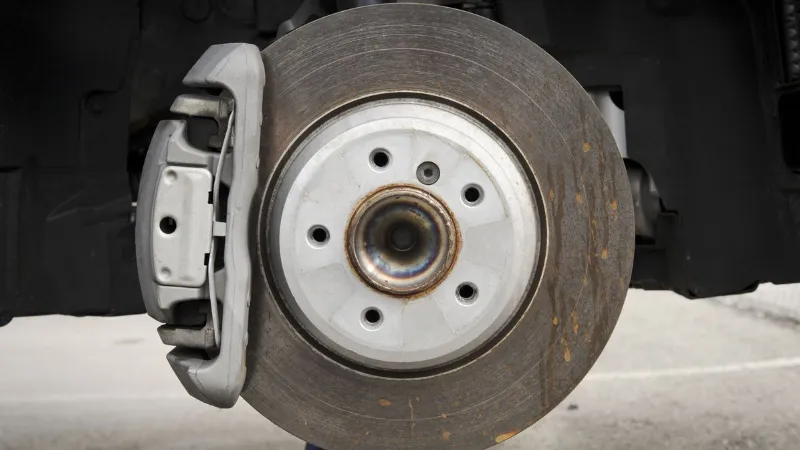Knowing how far can security cameras see will help you decide where and how to best install your surveillance system. Therefore, leaving no blind spots. Continue reading to learn more about this subject…
Generally speaking, a regular security camera can see in a range between 10 to 70 feet (3-23m) depending on the lens size, resolution, and the type of sensor. However, there are other camera types that can see at a distance greater than 1,000 feet, such as PTZ cameras.
Continue reading to learn more.
How Far Can Security Cameras See?
You can better protect your property and stay clear of any potential blind spots by being aware of the distance and the acceptable clarity that the camera can deliver. Intruders must be able to be recognized and car features and license plates must be visible in the image.
You should inspect your area and determine the distance between the installation point and the primary activity being monitored before investing in any security cameras. Then purchase the cameras based on these price points.
Another thing to think about is whether you need to take a general picture or whether you also need to look for things like license plates, faces at entrances, and so on.? Most of the time you’ll need regular cameras, but in some cases, you may need special models. Clarifications are provided here.
The range of the security camera is determined by a variety of specifications and factors. While others have wider angles, some cameras have long range vision. Others have extremely wide-angle but close-up vision.
To choose the camera that best meets your needs, you must be aware of all these factors. The following factors in particular have a major impact on the CCTV camera range distance.
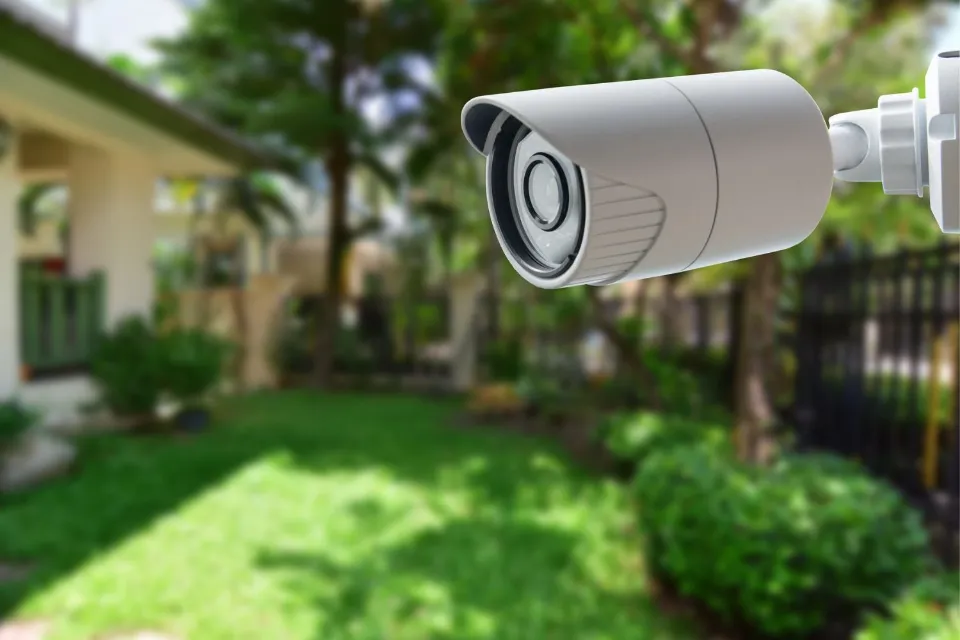
The Viewing Angle (Field of View)
The field of view, which is influenced by a number of factors, is the coverage area that the camera can “see” within a scene. More can be seen, but there are fewer fine details the wider the field of view. (the objects appear small and far away).
The less scene you can see, but the clearer the image is (clear objects, closer distance), the narrower the viewing angle. The field of view is depicted in the diagram below.
However, some security cameras are available with lenses that can be adjusted, allowing the user to change the viewing angle. Security cameras can have fixed viewing angles. Check out this guide’s next section for more information.
The Lens Size
The size of the security camera’s lens, also referred to as the focal length, is the primary factor in determining how far and how much of an angle it can see. technically, it’s the distance between a lens’s focus and its center.
The lens size is measured in mm and it comes in two types:
Fixed lens. It is common and typically offered in 2.8mm, 3.6mm, 4mm, 6mm, 12mm, etc. This type of camera’s lens size cannot be altered once purchased. The item is secured by glue.
Varifocal lens. The needs of the installation can be better met by adjusting this type on the jobsite since it is not fixed. The common varifocal lens size is 2.8mm-12mm which means the lens can be adjusted starting from 2.8mm and up to 12mm.
To understand how the lens size correlates to the distance and the viewing angle, remember this:
- Wider fields of view result from smaller lens sizes. Although the camera can see clearly at a wide viewing angle, it cannot see clearly at great distances.
- The larger the lens size, the narrower the field of view. Although the angles are narrow, the camera will produce clear images at a great distance.
If you need a wider viewing angle, then you should go for a low lens size camera. A 4mm camera is an option if you require greater clarity and distance (but a narrower angle), for example, to see your driveway. A 4mm lens camera typically works well at distances of about 40–50 feet.
Another type of camera is a PTZ (pan, tilt, zoom) style camera, which can be moved up to hundreds of feet away and has an adjustable lens size that can be controlled remotely (depending on the model). These cameras are obviously expensive.
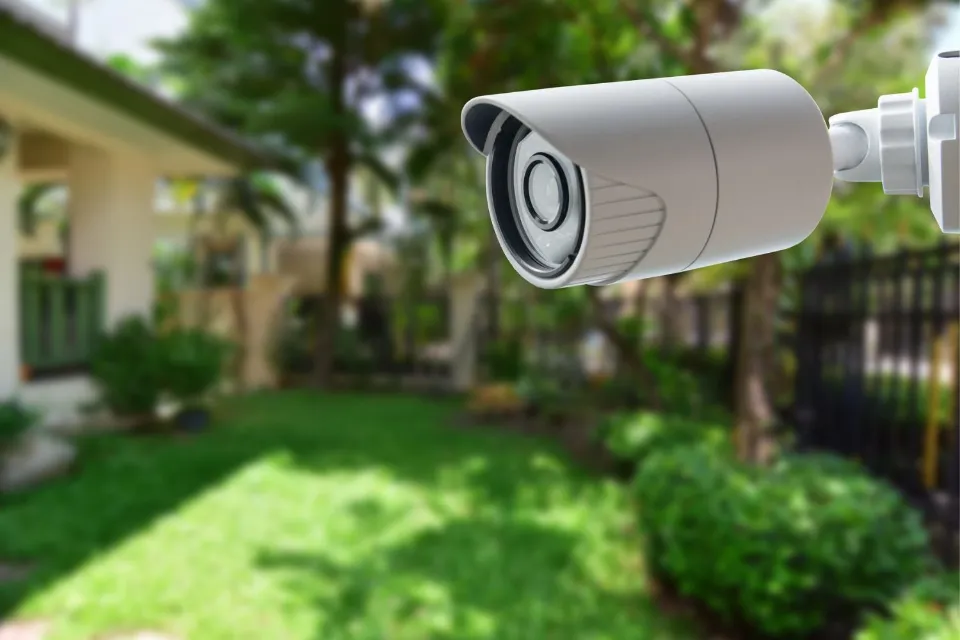
Resolution
If your security cameras only captured an image with no details, it would not make sense.
Therefore, it is wiser to concentrate on how far CCTV cameras can see clearly with discernible details rather than asking how far a security camera can see (at night).
Your security cameras’ resolution will be important in this situation. With HD security camera prices getting much more affordable, you can use 4MP, 5MP, and even 4K security camera systems for detailed video surveillance.
Installation Location
The range that a surveillance camera can see can also be impacted by where you place your security cameras.
How?
If you’ll allow me to elaborate, bricks, concrete floors, walls, and even large outdoor trees between the camera and the monitoring site can reduce the signal strength, reducing the range of your security cameras.
Distance
That’s something you probably know. It’s common sense that if the object is further away from the camera it’s harder to see it with good details.
The distance of the subject or object from the security camera must be taken into account. You can use this information to determine whether the camera can identify a subject at that distance.
As I stated at the beginning of this article, you will learn how to calculate the range of a security camera by entering some data into the software. However, before you can calculate the range of a security camera, you must first understand the variables that will impact the calculation, so keep reading.
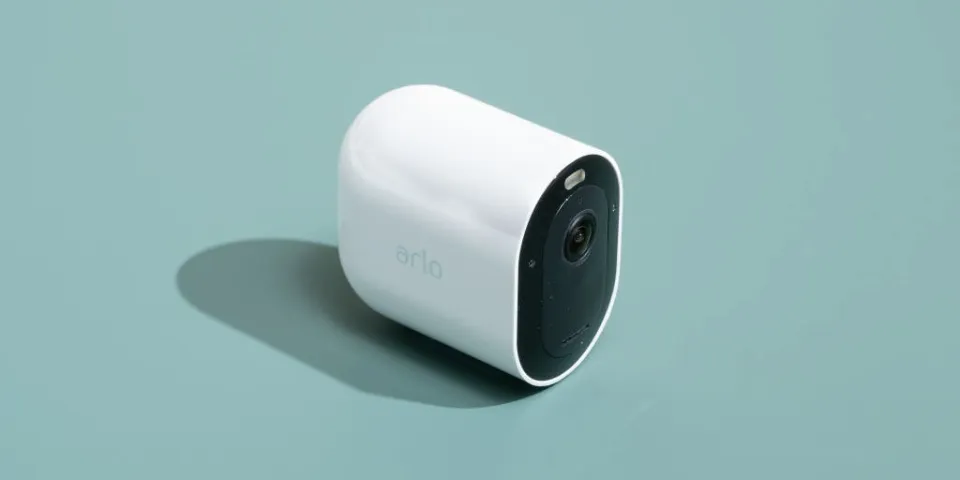
Quality
When determining the area that outdoor security cameras can see, the quality of your camera is also important.
Not all security cameras are created equal, keep that in mind. That is, even though they are said to have a similar field of view.
Think about top security camera brands when it comes to quality.
When it comes to dependability, durability, and, of course, quality, these are relied upon and have sizable customer bases.
They may be a little expensive, but they are far better than those from unknown brands. And even though you initially have to pay a bit, choosing security cameras from reputable brands will allow you to save a little money.
In addition to these, premium security cameras from reputable brands include the seller’s technical support should you require it. They offer after-sales services which unknown brands do not offer their clients.
Night Vision Capabilities
Some security cameras have infrared illumination (IR) for night vision. In other words, they can undoubtedly see in the dark.
There are several things that can influence how far your security camera can see at night. These elements may include lux rating and LED type. I won’t talk about it here because it’s a little too technical.
The ones with better vision and technology are slightly more expensive, though, to keep things straightforward. Thermal cameras can come for cheap like these that thermalcameras.guide have listed or may cost a fortune, totally depending on your requirement.
It is also advised to have a security camera with the 3D-DNR (Digital Noise Reduction) feature, which enhances the quality of the image captured in low-light conditions (when the IR is not being used).
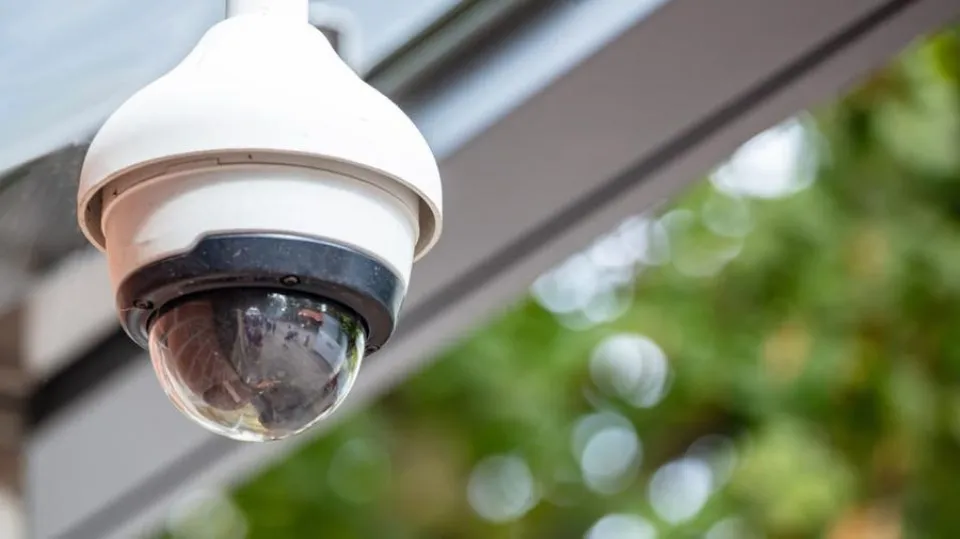
What Affects the Viewing Angle?
The camera enclosure, the location of the lens, and the camera’s functionality are the most frequent determinants of what influences a security camera’s viewing angle.
- Camera enclosures
A few exceptions aside, I found that when I compared the enclosures of the aforementioned examples, the camera angle was generally smaller the larger the enclosure. For example, the Arlo Pro 2 is the smallest of the ten cameras listed, has the second largest viewing angle of the ten cameras (Ring Spotlight Cam is the first). As an alternative, compared to many of the other CCTV systems on the list, the Zosi CCTV systems have a viewing angle between 40 and 90 degrees. While this is a small sample, I think this accurately represents security cameras.
The Ring Spotlight Cam stands out among the other nine security cameras because it has the largest body and the best viewing angle. I think the additional features, not the camera, are more affected by the enclosure’s size. The Ring Spotlight Cam can offer two-way audio, an emergency siren, a spotlight, and two battery slots. The enclosure is bigger than many others because all of these features need to be housed inside the camera.
- Lens location
The ten examples have lens locations that are either flush with the enclosure or set back from the enclosure. The lens setting affects the viewing angle because it determines what the camera can and cannot see. Wider viewing angles were available with cameras whose lenses were flush with the camera than with those whose lenses were set back. The camera’s viewing angle is significantly impacted by the depth set back, despite its subtlety. Let’s look at some examples.
The cameras with the two widest viewing angles (Arlo Pro 2, Ring Spotlight Cam) have lens locations that are almost flush with there enclosures. The Arlo Pro 2 is placed a very slight distance behind the Ring Cam, but only if you look very closely. Due to this extremely small difference, the Ring Cam or Arlo Pro offers a 10 degree advantage.
Though they are not flush with their enclosures, the Zosi CCTV systems are still visible. The small lip on these products’ enclosures helps to narrow the viewing angle of the cameras.
- Camera functionality
The camera’s viewing angle is significantly influenced by its functionality. If the camera is going to remain in a fixed position, then the viewing range tends to be wider. However, If the camera has the ability to pan, tilt, and zoom, then the fixed viewing range is going to by very narrow. The Arlo Pro and the Wansview Wireless camera are two instances of this.
After being fastened to the base, the 130-degree viewing angle Arlo pro is intended to stay in a fixed position. In contrast, the Wansview Wireless camera has a very small viewing angle (between 65 and 75 depending on the model), but it can widen its viewing area by using the pan and tilt features. With pan and tilt enabled, the camera has a horizontal viewing angle of 350 degrees, and a vertical viewing angle of 76 degrees

Viewing Range by Common Types
- Bullet cameras
Having a viewing angle range of 22 to 110 degrees, bullet cameras are so named due to their size (2 to 3 inches long) and shape (bullet casing). A single manufacturer’s product lines can have a very dramatic impact on this range. Also, this viewing range may take into account pan/ tilt/ zoom features enabled on higher end models. To increase the viewing angle of these cameras, you can zoom out, but you should be aware that this will affect how clear the objects in your field of view are. You may need multiple cameras in a single location in order to achieve the depth and width you need to achieve expected results.
- Dome cameras
Dome cameras are similar to bullet cameras in that the viewing range can very greatly and some higher end models have pan/ tilt/ and zoom and standard features. A dome camera’s typical viewing angle ranges from 60 to 81 degrees. Similar to other cameras, a dome camera that is intended to be fixed in place will have a much wider fixed viewing angle than a camera that can pan, tilt, or zoom. Several dome cameras are available that offer a complete 360 degree panoramic viewing angle. You can find these cameras at the very high end of product lines with a price tag to match this unique feature.
- Hidden cameras
A surprising wide viewing range of 90 to 150 degrees is offered by hidden cameras, which are created to blend in with their surroundings. Typically, covert cameras are installed in unassuming, regularly occurring office and home goods. Alarm clocks, USB chargers, and smoke detectors are just a few examples of small items that can contain hidden cameras. Many of these newer “spy cameras” have motion detection and infrared sensors to view and record at night. Before purchasing a hidden camera, check with local, state, and federal laws to ensure what you purchase is considered legal.

What to Do If You Want to Monitor Places at a Distance
So, if you need to keep tabs on a site from a distance, below are some feasible tips to serve your purpose:
- Select security cameras with varifocal lenses, which have a wider field of view. Without lowering the quality of the image, you can zoom in to identify distantly visible details.
- Higher resolution security cameras, like 5MP and 4K ones, can increase the odds to deliver usable images and videos from a distance.
- Make sure there are a few blocks between the wireless security camera and the monitoring location if you plan to purchase one.
- Choose security cameras from reputable brands to prevent later disputes and needless trouble.
- Make sure your security cameras can see clearly at night and have a wide field of view.
Read about
FAQs
How Many Degrees Does a Camera See?
Standard/Medium: Lenses covering a viewing angle of 60 to 25 degrees, representing an effective focal length of 25mm to 65mm. Lenses with a 25–10 degree field of view, or a 65–160 mm focal length, are referred to as telephoto lenses.
How Far Can a 360 Camera See?
Some of these cameras can see up to distances of 200 feet away in complete darkness. Auto Motion Tracking – The majority of 360-degree PTZ security cameras have excellent auto-motion tracking features that can assist you in spotting and following any moving people or objects in the monitoring area.
How Far Can a 1080p Camera See?
While the average viewable distance for a standard home 1080p security camera is around 15 meters the ability to use the camera for Only the technical details are used for identification purposes.
What Do Security Cameras See?
A home security camera is a video recording device that captures footage of your home and property that you can view on a smartphone, tablet, or computer from anywhere using an internet connection. The majority of home security cameras are motion-activated, which means that when they notice motion, they will start recording and alert you.
Summary: How Far Can Security Cameras See?
As we see from this post, the most important aspect of a security camera can very greatly based on a number of factors. These elements consist of the following: camera type, enclosure type, lens placement, and camera features. Make sure you are aware of the best locations for your cameras and the correct mounting angles before choosing a security camera. You ought to be able to locate a camera that offers the features you require, allows you to capture the angles you require, and will improve the security of your home or place of business.
If you have any questions, please leave a comment. KV Auto tries to give you the best car industry information. Thank you for reading.

